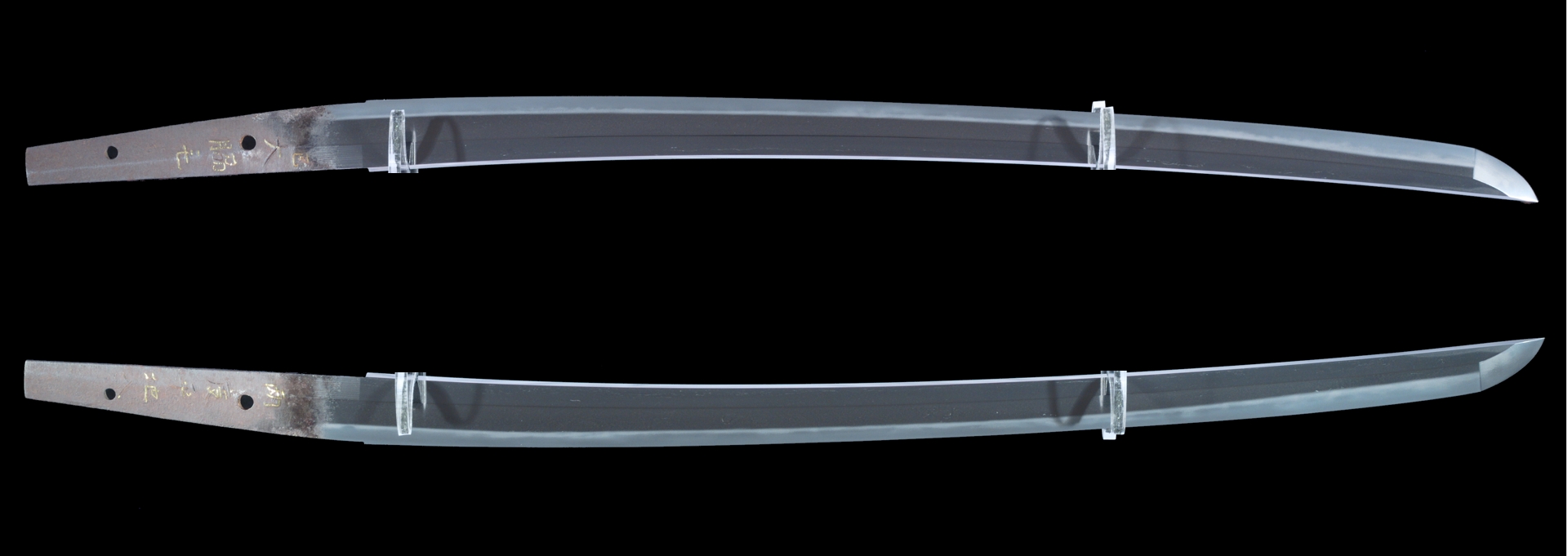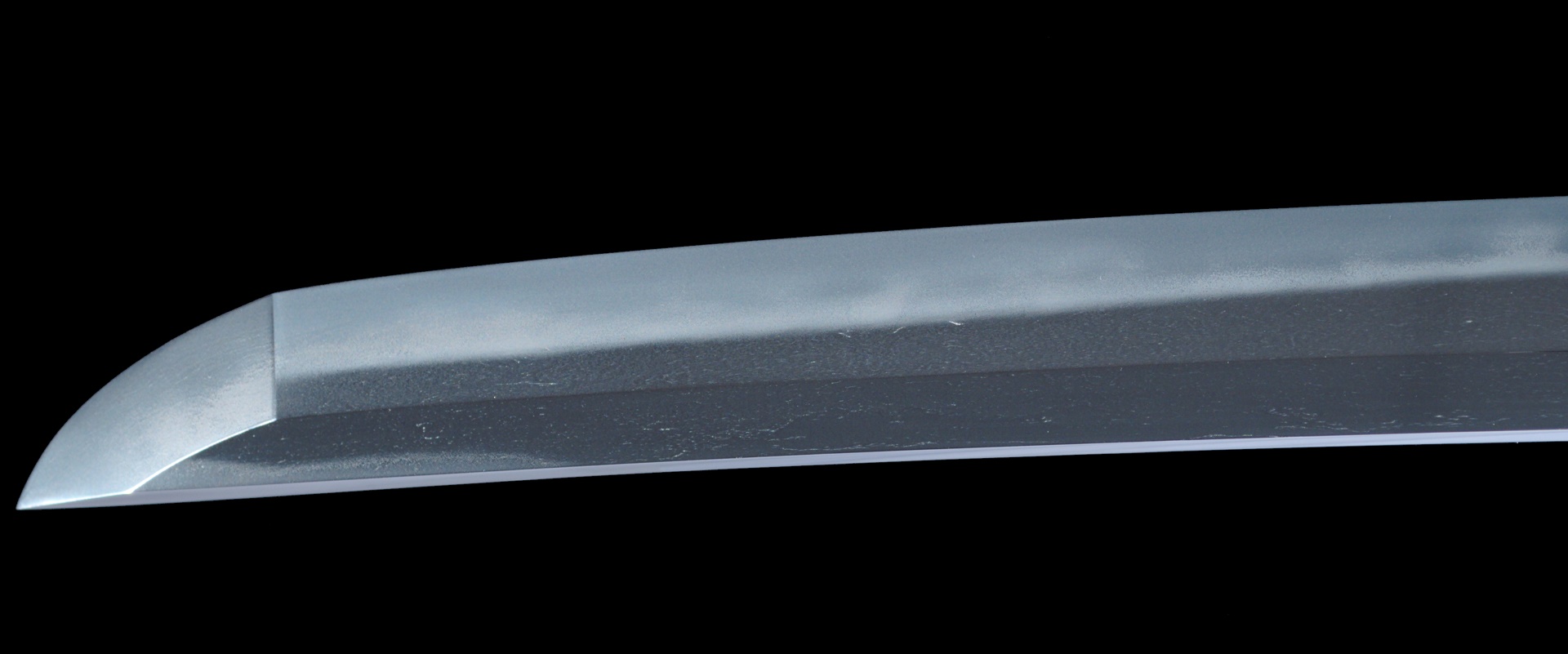Wakizashi Koto attributed by NBTHK to Morihiro Chiyozuru – 千代鶴守弘 -
Gold Engraved Cutting Test (Kinzogan) – 己大脇毛 丙度平地入
The first part of the cutting test (Tameshigiri) reads « Dai Wakige », which involves cutting a body in half at the armpits.
These tests were mainly carried out on the bodies of death row prisoners and were quite popular during the Edo period. They are also extremely rare, especially when testing very old blades.
The name « Dai Wakige » was an already obsolete name at the time of the cutting tests standardized by the Yamada clan at the end of the Edo period, we can therefore deduce that this test is much older and that it has very probably made in early Edo or even perhaps in Muromachi.
The second part means that the blade passed through the body to the dodan (mound of sand), and that this test was carried out twice (therefore on two different bodies) with the same result. This small clarification is probably intended to emphasize the difficulty of this test, which is said to be the most difficult to perform.
Nanbokucho period (~1384)
Chiyozuru School – Echizen Province
NBTHK Hozon Certificate
Fujishiro Grade: Josaku
Gorgeous 49 cm o-suriage blade, combining an impression of elegance and power, well balanced and in perfect condition.
The jigane is made of ko itame of remarkable quality, sprinkled with ji-nie.
The hamon is an o-suguha pulling discreetly on the notare, in ko nie-deki with a boshi in long Fukashi style kaeri.
The blade is accompanied by a shirasaya and a sumptuous koshirae from the Edo period, on the theme of birds.
The different elements are of good quality, in shakudo nanako with gilding. The tsuka is braided in jabara and the saya is decorated with a Maki-e work representing a bird fluttering around a flowering branch.
The tsuba is made of polished shakudo, and the menuki, also in shakudo, represent samurai on a boat.
Signed kozuka from the Ishiguro school.
Habaki in solid silver.
Dimensions:
Nagasa: 49 cm
Motohaba: 3 cm
Kasane: 0.7 cm
Sori: 1.1 cm
The Chiyozuru school has its roots in the highly prestigious Rai school and was founded by Rai Kuniyasu 國安, the grandson of Kunimatsu who was the younger brother of the illustrious Rai Kunitoshi, considered to be one of the greatest blacksmiths in Japanese history.
Morihiro was Kuniyasu’s son. He lived in Kaga and was nicknamed Kamosaburô.
The name Chiyozuru comes from the fact that Kuniyasu was nicknamed Chiyozurumaru during his childhood. Chiyo (千代) means « thousand years » and Zuru (Tsuru: 鶴) means « crane » in Japanese. So by its very meaning, this name was synonymous with good luck in Japan, and as a result swords forged by this school were very popular at the time, whether for combat, ceremonies or other cultural and traditional events.
As you lose yourself in the contemplation of this superb blade, you will easily realise that this story is not just folklore, but that there is a fundamental and certain truth here, like smoke that cannot exist without fire…
Sold
























